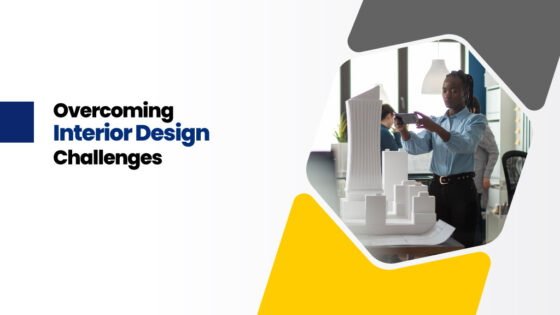Colour is a vital element in setting the mood of a space, and its effects on human emotions have been studied extensively in the field of interior design. Colour psychology is a school of thought that seeks to understand how different hues can create a specific atmosphere and mood in a room.
This involves a deep understanding of colour theory, taking into account multiple factors like tint, saturation, and tone, as well as the psychological effects of different hues on human emotions. The science of colour perception has been studied for hundreds of years and has made significant strides with experiments conducted by Isaac Newton and Johann Wolfgang von Goethe. This has led to the creation of the first colour wheel and the groundbreaking “Theory of Colours” which examines the psychological effects of colours on human emotions.
Pursuing BDes programs at the best interior design colleges in Tamil Nadu provides deep insights into real-world applications with tailored programs, enabling you to gain specialized knowledge and stand out among your peers.
While colour theory has applications in numerous fields such as fine arts, advertising, branding, fashion, and industrial design, it is particularly crucial in interior design as it has a tremendous impact on setting our everyday mood and lifestyle. The ambience created by the colours used in a room can influence the emotions of people who spend time in that space. Therefore, it is essential to understand the meaning of colour in interior design and choose hues that invoke the desired emotional response.
Correlation between room colour and psychology:
When it comes to room colour psychology, let’s initially consider the primary colours, which form the basis of the colour wheel.
Red – a fiery and warm colour ideally suited for those seeking bold design schemes as it connotes power, sensuality, and vigour. However, it’s best used as an accent colour in textiles or furniture since having entire walls drenched in red can be overpowering in smaller rooms.
Karpagam Architecture is one of the top interior design colleges in Tamil Nadu that prepares you to work with diverse teams, navigate challenges associated with building construction and ensure project success.
Yellow – associated with feelings of happiness and optimism, can brighten up small, dark, enclosed spaces. It’s like a substitute for sunshine in areas that don’t see a lot of natural light. However, it’s vital to choose the right shade of yellow since brighter shades can kindle feelings of agitation or jealousy.
Blue – the only primary colour which falls within the “cool” spectrum range, is associated with nature and fosters intelligence, tranquillity, and trust. The colour is soothing and calms you down, making it ideal for creating a peaceful home environment. In a study on interior design colour psychology, blue was the top colour choice and the best for studying among university students.
KARCH is one of the leading BDes interior design colleges in Tamil Nadu that equips you with the necessary technical, soft and interpersonal skills required to navigate complexities and establish yourself in the field of construction.
Moving on to secondary colours, which is the outcome of mixing two primary colours.
Green – is a hybrid of blue and yellow, and is a popular colour used while designing home interiors because it makes people feel safe and secure. It’s rejuvenating and communicates a feeling of freshness, growth, and vitality. Many people prefer green because it helps them feel safe and secure.
Purple – it kindles passion and intensity with the right approach, elevating room dynamics. Like green, it’s a hybrid of cool and warm colours that can be emphasized or toned down depending on the selected hue. Purple makes a room feel lively, making you feel light-hearted and playful.
Pursuing specialized courses at the best BDes interior design colleges in Coimbatore opens you to industry internships and projects, provides hands-on exposure to real-world situations, and enables you to build a robust portfolio to impress potential employers.
Orange – kindles the creative spirit, promotes cheerfulness and provides the right ambience to welcome visitors; the warmth of vibrant orange hues can energize you. The colour is particularly suitable for bathrooms, kitchens, and other areas where yellow would be appropriate.
While discussing the influence of room colours on human emotions it’s vital to include “non-colours” like black and white.
Black – is synonymous with elegance, sophistication, and power. However, excessive use of black colour in interior spaces can communicate a death-like vibe invoking a feeling of unease. A combination of black and white tones conveys a classic and timeless design aesthetic. Overuse of black, however, can evoke feelings of sadness or depression, hence architects need to be careful when choosing black colour schemes while designing interior spaces.
Pursuing specialized courses at the top interior design colleges in Tamil Nadu provides comprehensive education that enhances your technical expertise and strategic thinking, empowering you to complete your projects successfully.
White – evokes a refreshing and clean feeling when used on walls, furniture, or floors and is widely preferred for ceilings. White represents goodness and purity and pairs well with most other colours. A crisp white trim and moulding frame for a vividly coloured wall can be visually pleasing. It also makes small rooms look larger, promotes relaxation and provides a comforting feeling among individuals present in the room.
Colour psychology is complex since there are varied colour properties that can be manipulated to evoke specific emotions. Colour attributes like tint, shade, tone, value, saturation, and chroma play a vital role in kindling emotions. The tint is a hue with added white, while the shade is a hue with added black, the tone is a hue with added grey, value refers to how much light a colour has and saturation refers to the richness of the colour tone, chroma denotes a colour in its purest state. All these colour properties can be leveraged to create a harmonious contrast in your interior design palette to invoke specific emotions as desired.






